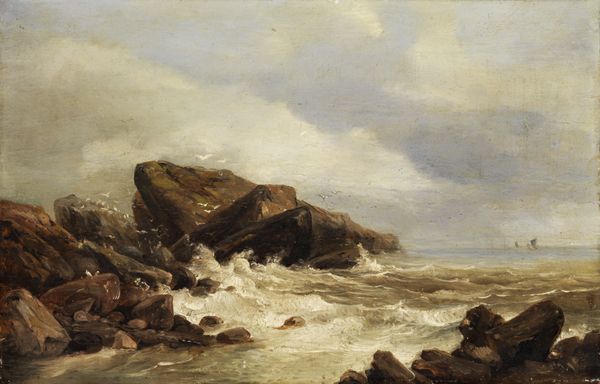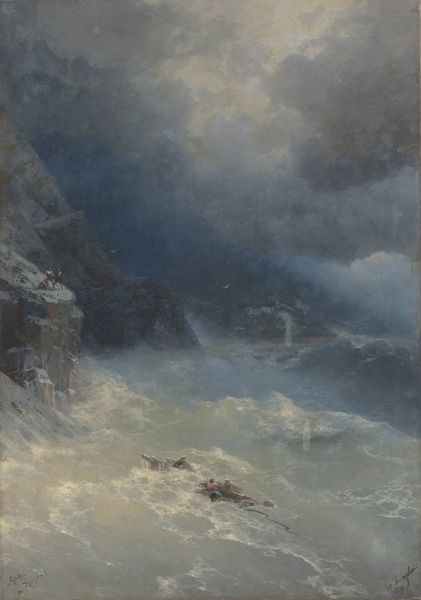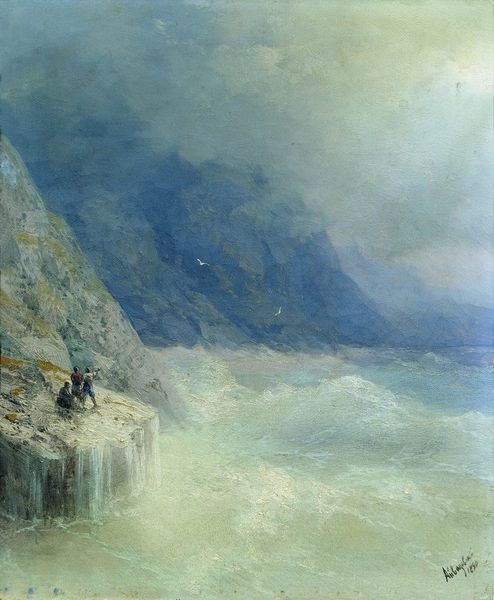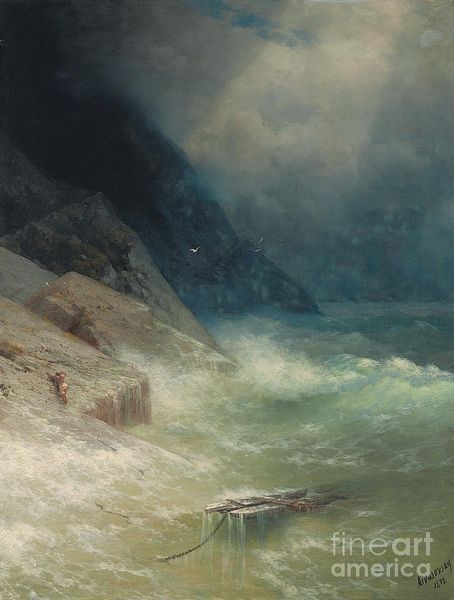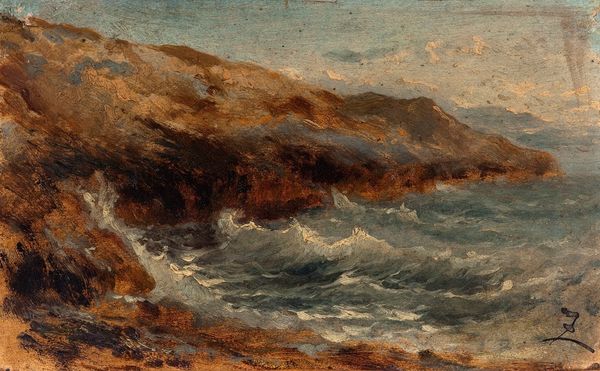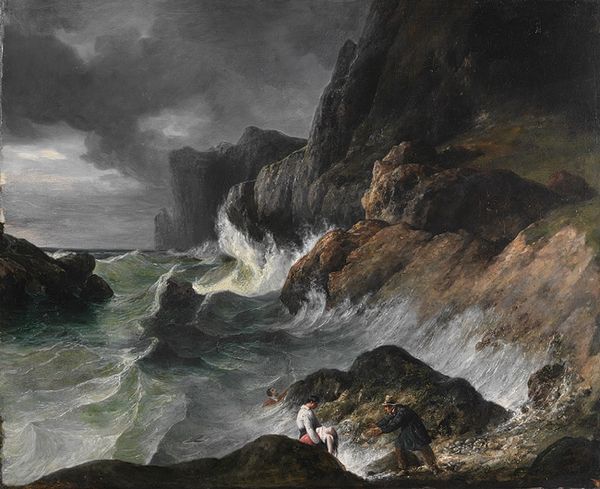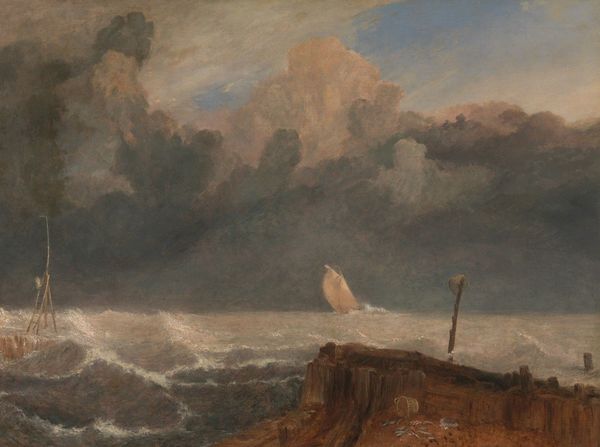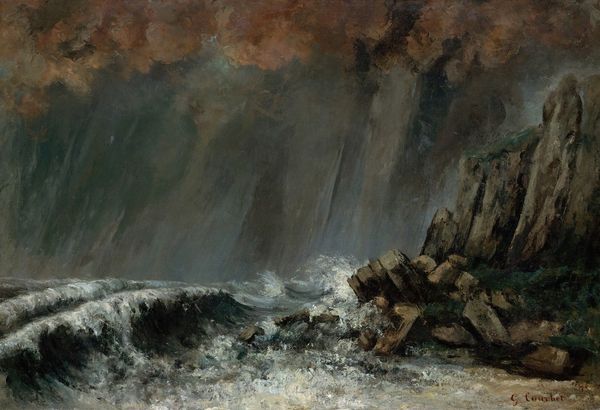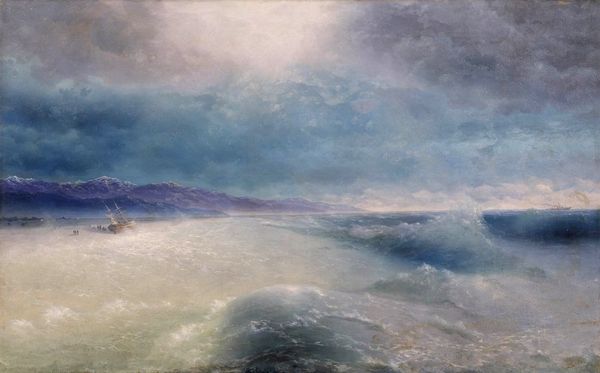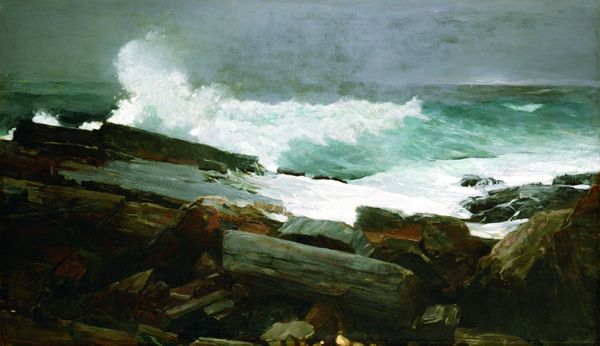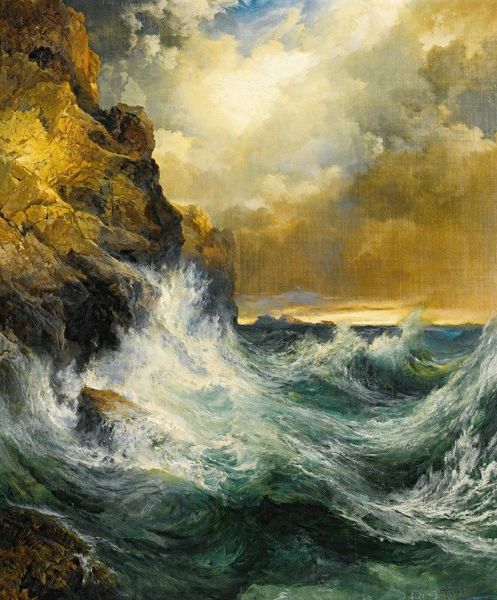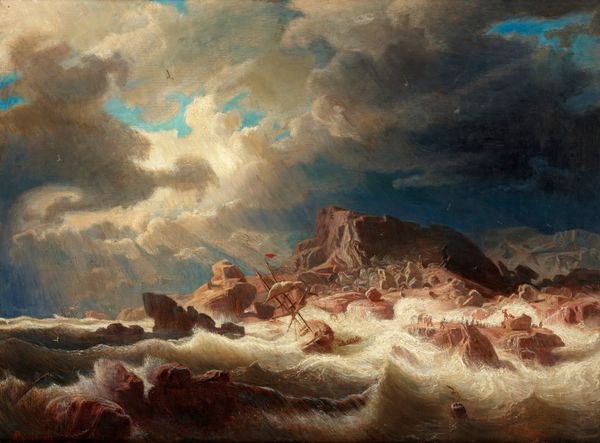
painting, oil-paint
#
painting
#
oil-paint
#
landscape
#
figuration
#
nature
#
romanticism
#
realism
Copyright: Public domain
Editor: So, here we have Aivazovsky’s painting, *A Ship in Peril,* an oil painting showing a tempestuous sea and some figures on a rocky coast. It feels very dramatic and emphasizes the power of nature versus the vulnerability of humans. How do you interpret this work within its historical context? Curator: It's a potent image. Aivazovsky was deeply embedded in the social and political fabric of 19th-century Russia. Consider how these dramatic seascapes, though seemingly 'natural,' often served nationalistic agendas, emphasizing Russia's maritime power and its control over vast coastlines, particularly the Black Sea after territorial gains. Editor: I never thought of landscape painting having a political dimension, how would an exhibit influence or enhance Aivazovsky’s political impact on audiences? Curator: Context is key. Museums aren't neutral spaces; they actively shape how we understand art. A grand Aivazovsky exhibition in, say, St. Petersburg, subtly reinforces a narrative of Russian strength and imperial reach, regardless of whether the curatorial team intends that. Notice the figures on the cliff, observers of the ship's drama; does their position relative to the tumultuous sea underscore ideas about spectatorship and power? Editor: Yes, they are removed, but also seem worried. Do you think this painting challenged the status quo at all? Curator: It’s less about directly challenging and more about navigating complex social currents. By visually celebrating the sea, a space deeply connected to trade, military prowess and even exploration, Aivazovsky bolstered the Czarist regime’s aims, aligning aesthetics with imperial ambitions. To answer, his success at that time had little to do with critiquing existing power dynamics. Editor: That’s a very different perspective than the artist simply painting a scene, thank you. I’ll think more about the intersection of art and politics from now on. Curator: Indeed, consider that every brushstroke exists within a larger social, cultural, and political frame. Understanding that frame helps us understand the artwork, its legacy and impact on how we, as a public, see and use art.
Comments
No comments
Be the first to comment and join the conversation on the ultimate creative platform.
